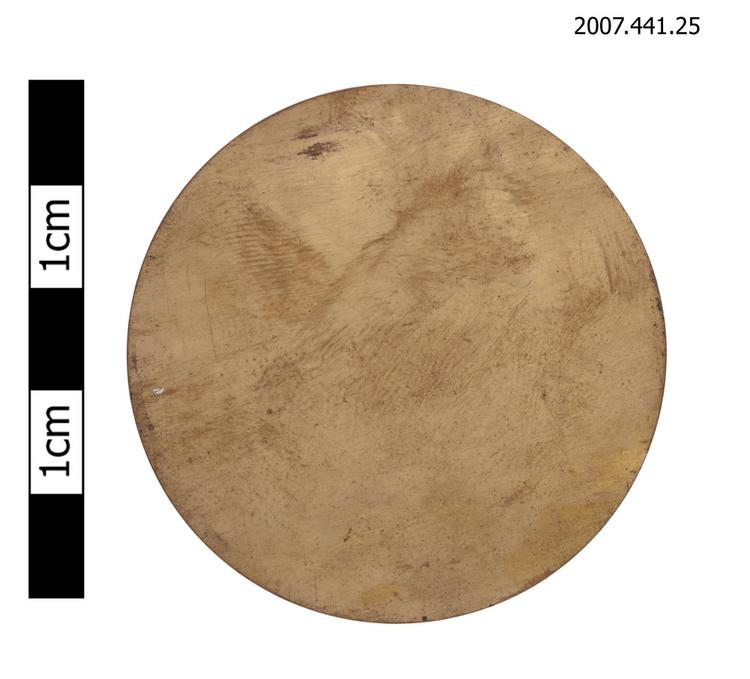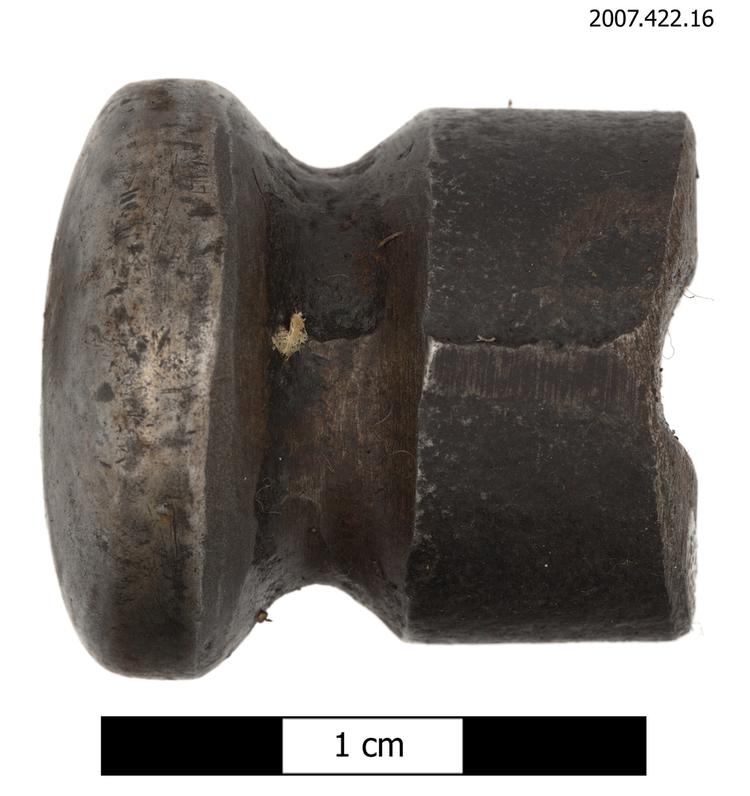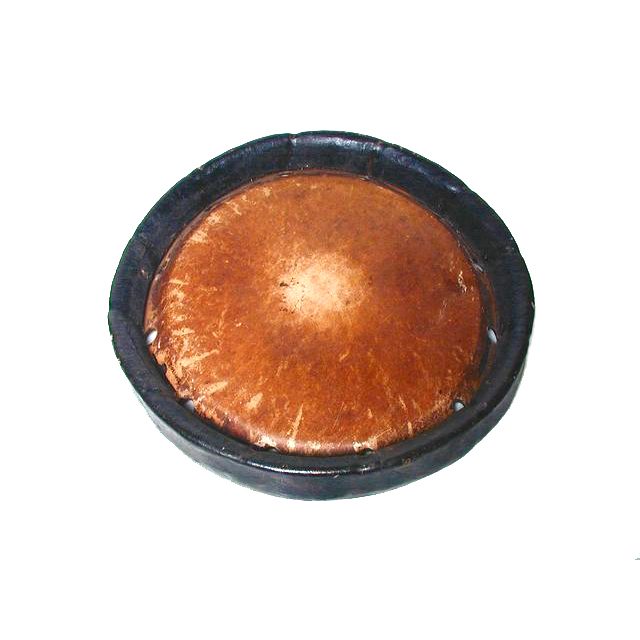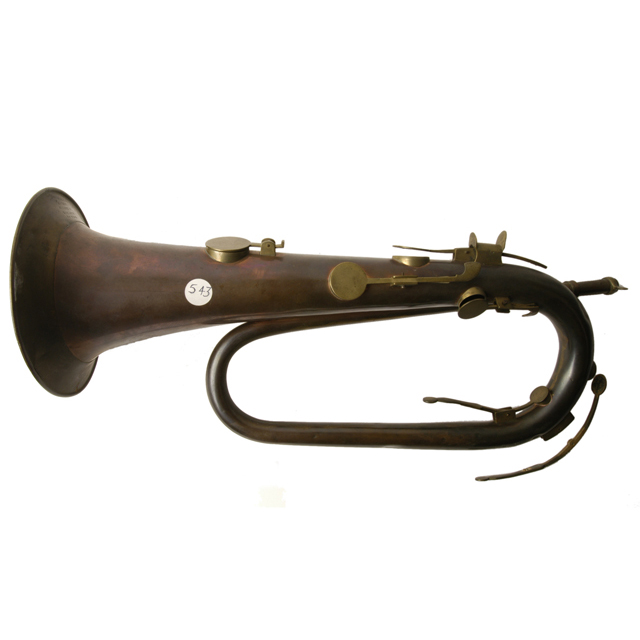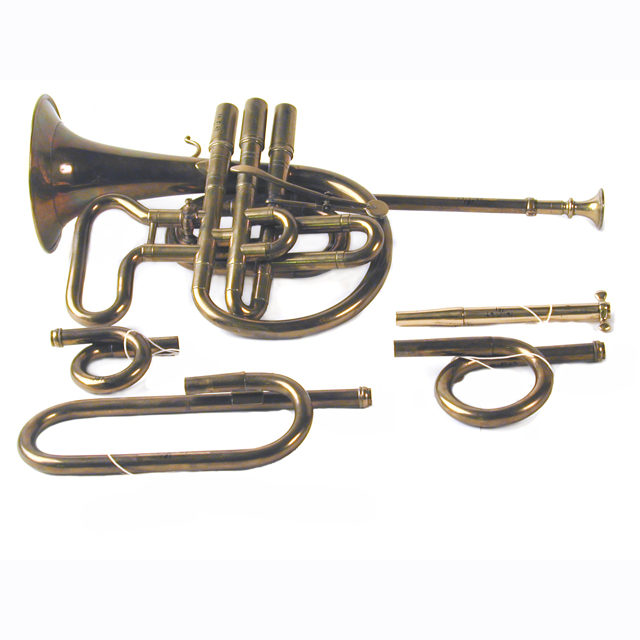
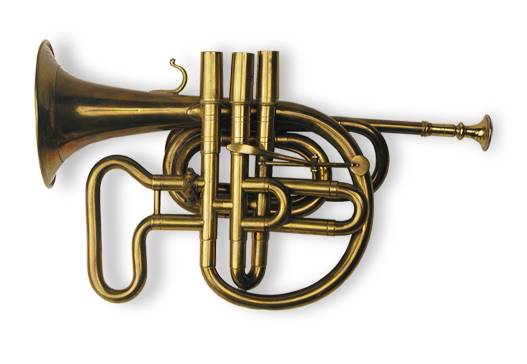
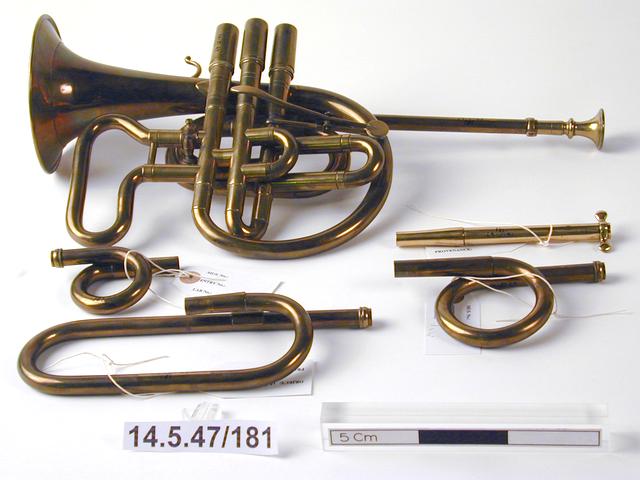
Cornet in B flat, yellow brass body, garland, ferrules and crooks, German silver valve touches. Three Stölzel valves. Tuning slide in looped mouthpipe. Clapper (trill) key on bell branch. Hook for right fourth finger. Brass mouthpiece with silver rim is probably original. Caps for valve touches. Shank for A, crooks for A flat, G and F and E coupler for use with F crook. The bent shank associated with this instrument is not the B flat shank, but the bent shank of a slide trumpet. Lacking B flat shank. Stamped: Kohler Henrietta St., Covent Garden, London. Inscribed: McFarlane's Improved Cornopean; and numbered 1080.
The cornet was designed for virtuosity. Its conical taper assists ease of tone production, technical flexibility and endurance. The cornet has always been the leader of the brass band. It was also popular in the orchestra during the 19th century, particularly in France. Virtuoso cornet players were considered celebrities, such as the player and composer Jules Levy, who toured extensively and was a household name in England and America.



